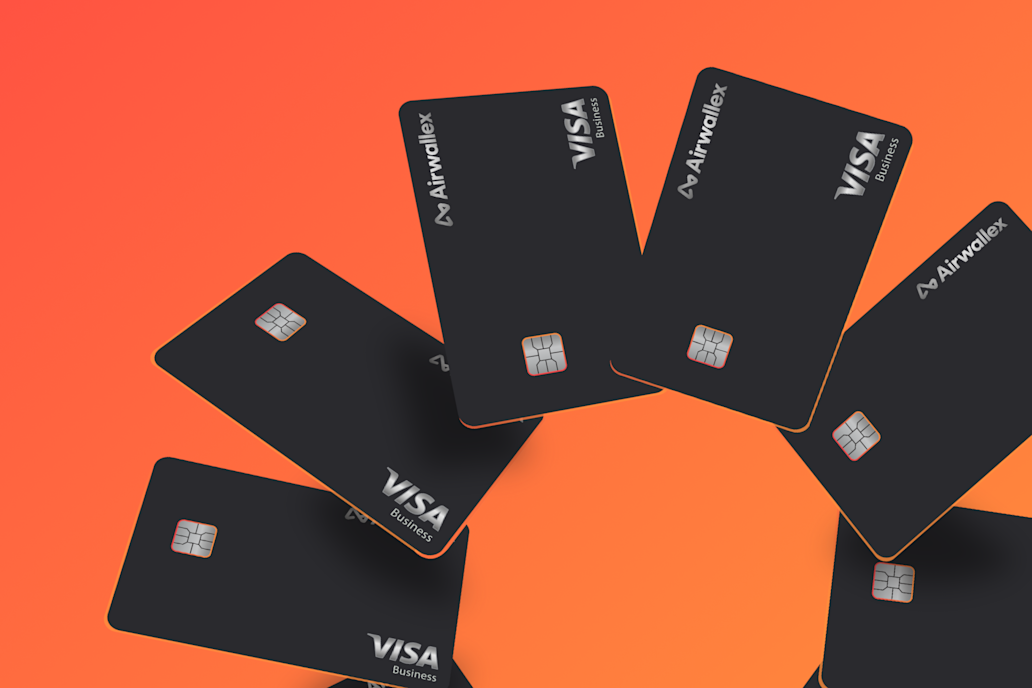How do credit card networks work? Here’s what you need to know

Ross Weldon
Contributing Finance Writer

Key takeaways
Credit card networks connect your business, customer banks, and issuers, to approve and settle payments securely.
Understanding how networks, issuers, and fees work can help you reduce costs and improve the checkout experience.
With Airwallex, you can accept global card payments, handle local networks, and settle in 130+ currencies, without the hassle of managing network relationships yourself.
When a customer swipes, taps, or clicks to pay, it feels almost instant. But behind every transaction is a complex system moving money securely between businesses, banks, and cardholders. At the centre of it all are the card networks, quietly making global payments possible.
If you run an eCommerce business, accepting credit card payments should be a default. They account for 20% of global eCommerce transactions, making them the second most popular payment method worldwide.
Understanding how card networks work can help you take greater control of your payment operations. When you know where fees are charged, you can find ways to reduce costs and negotiate better terms with your payment provider. In this guide, we'll explain the role of card networks, how they differ from issuers, the types of networks you need to know, and the fees involved.
What are credit card networks?
Think of a credit card network as the middleman that makes card payments possible. It manages the communication between your business, your bank, your customer, and their bank. Every time someone pays with a card, the network moves the transaction information between these parties to approve the payment and get you your money.
Visa and Mastercard are the biggest card networks worldwide, but others like American Express and UnionPay also play major roles depending on where your customers are based. The network you accept can influence everything from your checkout experience to your transaction costs.
Credit card network vs credit card issuer
When you accept a card payment, two different players make it happen: the card network and the card issuer. They sound similar, but they do very different jobs.
The card network is the infrastructure. It manages the flow of information between your customer’s bank, your bank, and your business. Networks like Visa, Mastercard, American Express, and UnionPay ensure that payments are authorised, processed, and settled correctly.
The card issuer, on the other hand, is the bank or financial institution that gives the card to your customer. Issuers decide whether to approve or decline a transaction, based on the cardholder’s account balance, credit limit, and payment history. They also take on the financial risk if a customer cannot repay.
An easy way to think about it: the card network is the motorway that connects everyone. The card issuer is the car hire company that gives the driver their car and decides how far they can travel.
How do card networks work?
Every time a customer pays with a card, a set of fast-moving steps happens in the background to complete the transaction. Here is how the process works from start to finish:
1. Payment initiated: The customer taps, inserts, or enters their card details at checkout. Your payment system captures the transaction information and sends it off for approval.
2. Payment request sent: Your payment provider sends the details to the card network, which acts as the bridge between your bank (the acquirer) and your customer’s bank (the issuer).
3. Authorisation: The card network passes the transaction request to the issuer. The issuer checks whether the card is valid, whether there are enough funds or credit available, and whether there are any signs of fraud.
4. Response shared: The issuer sends a quick yes or no back through the card network to your payment provider. If approved, the customer sees a payment confirmation within seconds.
5. Settlement: At the end of each business day, approved transactions are grouped together and sent back through the network for settlement. The cardholder’s bank sends the money to your bank, minus any fees.
6. Funds received: Your business account is credited with the sale amount, ready for you to access according to your payout schedule.
Start accepting card payments today
Different types of card network
Not all card networks are the same. Some operate globally. Some dominate in a specific region. Some issue their own cards, while others partner with banks. Understanding the differences can help you offer the right options to your customers and reach more buyers in more markets. Different countries lean heavily towards different networks. By offering a mix, you give your customers more ways to pay and remove barriers at checkout.
Here are the major players you need to know:
Visa
Visa is the largest card network by transaction volume worldwide. It operates the network, and processes payments, but does not issue cards directly, banks do.
Cards in circulation: Over 4.4 billion globally
Market share: Highest purchase volume among all networks
Geographical reach: Accepted in over 200 countries and territories
Mastercard
Mastercard is Visa’s biggest rival, operating a similar model by partnering with banks to issue cards.
Cards in circulation: About 2.9 billion globally
Market share: Second-highest global transaction volume outside China
Geographical reach: Accepted in over 210 countries and territories
American Express (Amex)
American Express runs a closed-loop network, meaning it issues its own cards and handles transactions internally. Amex cardholders tend to spend more per transaction.
Cards in circulation: About 141 million globally
Market share: Smaller by volume, but high average spend
Geographical reach: Accepted in 130+ countries, and strong in North America
Discover
Discover also operates a closed-loop model and is a major player in the US, expanding internationally through partnerships.
Cards in circulation: Around 57 million (mostly US-based)
Market share: Smaller globally, but significant US presence
Geographical reach: Accepted in over 200 countries through Diners Club partnerships
UnionPay
UnionPay is China’s dominant card network, with the largest number of cards issued globally. It's expanding acceptance outside China, especially across Asia and Europe.
Cards in circulation: Over 9 billion cards (debit and credit combined)
Market share: Largest by number of cards issued
Geographical reach: Accepted in over 180 countries
Credit card network fees
Whenever you accept a credit card payment, a few small fees are deducted behind the scenes. These fees help card networks and banks keep payments secure, reliable, and fast. Understanding how these fees work can also give you an advantage when choosing a payment provider, negotiating your rates, or adjusting your pricing strategy.
Here are the main types of fees you should know about:
Interchange fees
Interchange fees are paid by your bank (the acquiring bank) to your customer’s bank (the issuing bank) for handling the transaction. Although it is your bank that pays, the cost often gets passed on to you through your overall card processing rates.
Purpose: To cover the risks and costs taken on by the issuing bank, like fraud protection, credit risk, and customer service.
Assessment fees (also known as network fees)
Assessment fees are small charges paid directly to the card network, such as Visa or Mastercard, for every transaction they process. Visa might charge around 0.13% of each credit card transaction as its network fee.
Purpose: To fund the network’s infrastructure, security, and technology upgrades.
Merchant Discount Rate (MDR)
The merchant discount rate is the total fee you pay your payment provider for accepting card payments. It includes the interchange fee, the assessment fee, and the payment provider’s own markup.
Purpose: To cover the full cost of processing card payments on your behalf.
Issuer fees
Issuer fees are additional charges sometimes paid between the card network and the bank that issued the card. They typically relate to extra services like rewards programmes or advanced fraud protection.
Purpose: To fund premium card benefits that help attract and retain cardholders.
Build a payment experience that grows with your business
Credit card networks play a bigger role in your business than you might realise. They impact how your customers pay, how much you earn, and how easily you can expand across new markets. When you understand how networks, issuers, and fees work, you can build a payment strategy that supports your growth at every stage.
With Airwallex, we handle the card network connections, issuer relationships, and fee structures behind the scenes, so you can focus on delivering the best checkout experience for your customers. You can accept local payment methods, settle in 130+ currencies, and reduce costs without the usual complexity. Whether you want a fast, simple integration or a fully customised setup, Airwallex gives you the flexibility to scale on your terms.
Power your global marketplace payments with Airwallex.
Frequently Asked Questions (FAQs)
What is the difference between a card network and a payment processor?
A card network facilitates communication between the banks involved in a transaction. A payment processor connects your business to that network and handles the flow of payment information.
Which are the largest credit card networks globally?
Visa and Mastercard are the most widely used networks worldwide. UnionPay dominates in China by card volume, while American Express and Discover also have significant global presence.
How do credit card networks ensure transaction security?
Card networks set strict security standards like PCI DSS, enable fraud monitoring, and use tokenisation and encryption to protect transaction data.
Are debit card networks the same as credit card networks?
Often, yes. Many debit cards use the same networks as credit cards, such as Visa or Mastercard. However, processing rules and fee structures can differ.
How do card networks impact international payments?
Card networks determine whether a customer’s card is accepted in your market. Choosing networks with strong international coverage helps you sell to more customers globally.
1https://www.statista.com/statistics/1111233/payment-method-usage-transaction-volume-share-worldwide/
2https://investor.visa.com
3https://investor.mastercard.com/
4https://ir.americanexpress.com/
5https://investorrelations.discover.com/
6https://www.unionpayintl.com/en/aboutUs/
View this article in another region:AustraliaNew ZealandUnited States

Ross Weldon
Contributing Finance Writer
Ross is a seasoned finance writer with over a decade of experience writing for some of the world's leading technology and payments companies. He brings deep domain expertise, having previously led global content at Adyen. His writing covers topics including cross-border commerce, embedded payments, data-driven insights, and eCommerce trends.
Posted in:
Business credit cards

